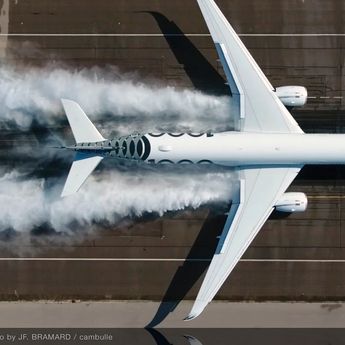It’s a fact, our industry has achieved huge improvements in safety since the 1950s, and technology has made a significant contribution in ensuring that the safety records of the whole aviation industry have very significantly improved.
In this series, we revisit some of the innovations that have provided a significant step change in improving the safety of our products. Today, let’s focus on the Fenestron.
One of Airbus Helicopters’ most recognisable innovations, the Fenestron, took to the skies on the second prototype of the Gazelle in 1968. It has since become emblematic of Airbus helicopters, with the H160 carrying this safety-enhancing, sound reducing technology into the next generation of rotorcraft.
Reinforcing safety was the main objective of the Fenestron. The idea behind shrouding the tail rotor was initially developed to provide additional safeguards for workers on the ground but also to protect the tail rotor in forward flight and in complicated operational environments, such as working around high-voltage power lines. Sound reduction benefits followed after much research and optimisation from one generation of the Fenestron to the next.
Originally called the “Fenestrou”, which is Provençal for “little window”, the term evolved into the renowned Fenestron. It was first certified on the Gazelle in 1972 and then subsequently integrated into the first single-engine Dauphin prototype, whose first flight was in June 1972.
The second generation came at the end of the 1970s with an all-composite Fenestron, which increased the diameter of the new Dauphin’s Fenestron by 20% up to 1.10 m. This improvement was motivated by the U.S. Coast Guards’ requirement for a highly manoeuvrable aircraft for Search and Rescue operations. The U.S. Coast Guards aircraft are still in service today and have accumulated more than 1.5 million flight hours.
In the meantime, research continued to optimise the shape of the Fenestron, blade foils, and to improve sound reduction, especially during certain phases of flight.
In 1994, the 3rd generation was fitted onto the H135 and optimised sound levels by using an uneven setting of the blades. In 1999 the H130 performed its maiden flight with a Fenestron derived from this version. The H145 followed suit in 2010.
Today, the H160 possesses the latest and largest Fenestron to be built on an Airbus helicopter with a diameter of 1.20 m. The fact that it is canted to 12° allows for improved performance with an additional payload and increased stability especially at low speed. With the H160, the Fenestron will be one of Airbus helicopters’ signatures in the skies for decades to come.
Safety Innovation series
Continue Reading

Airspeed information, whatever the conditions
Web Story
Safety
Airbus has developed a system which improves management of unreliable airspeed events.
How to make takeoff safer
Web Story
Safety

A new workshop designed with safety in mind
Web Story
Safety

Using aircraft as sensors to prevent runway overrun
Web Story
Safety

Severe weather hazards: the best is to anticipate and avoid
Web Story
Safety

